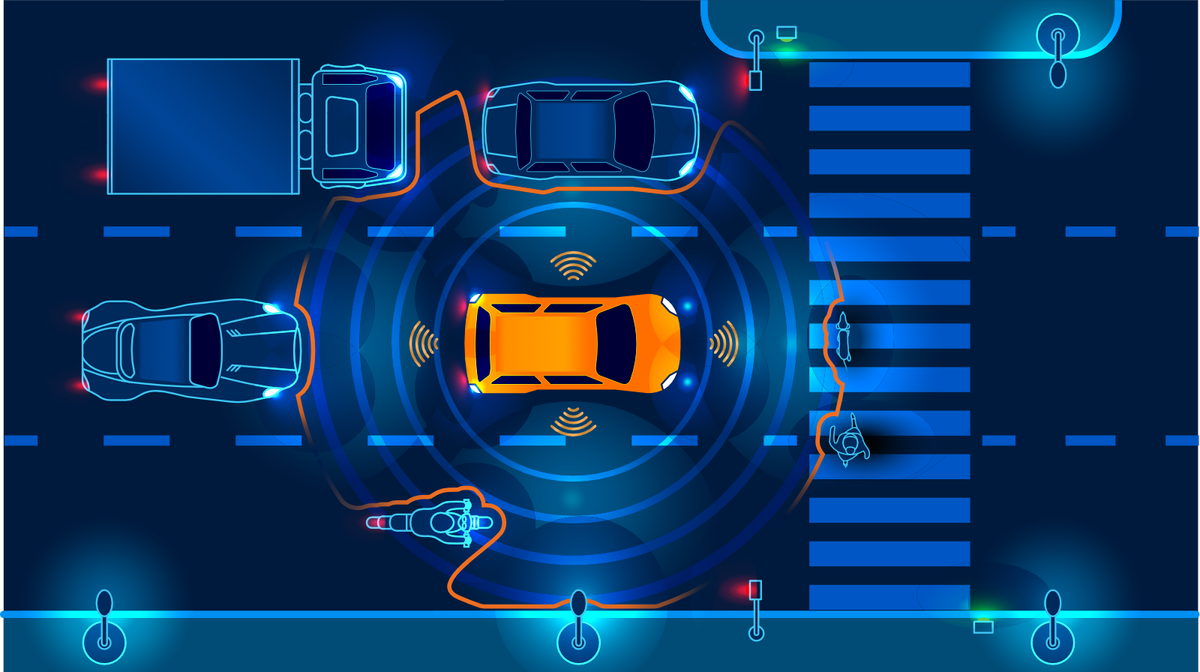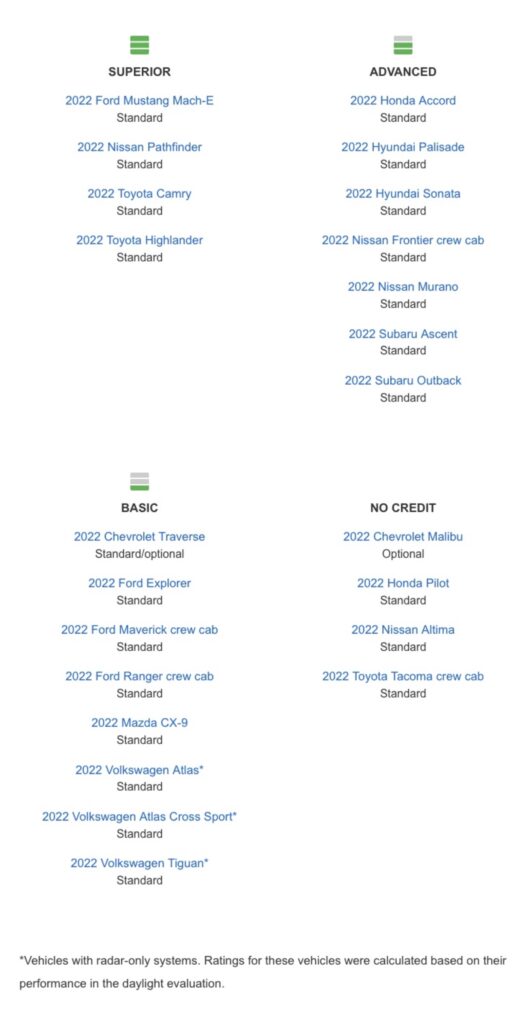Pedestrian Autobraking Doesn't Do So Well at Night

It’s hard to see in the dark, and that turns out to be true not only for people but also for emergency braking systems found on many newer cars, according to the Insurance Institute for Highway Safety (IIHS).
The non-profit research group recently tested 23 midsize cars, SUVs and pickups and the results, while enlightening, were not encouraging.
“As we expected, most of these pedestrian AEB systems don’t work very well in the dark,” says IIHS President David Harkey. “But it’s clear automakers can rise to this new challenge, as Ford, Nissan and Toyota each earn superior ratings for some models.”
The Ford Mustang Mach-E, Nissan Pathfinder, Toyota Camry and Toyota Highlander earn superior ratings. Seven more vehicles — the Honda Accord, Hyundai Palisade, Hyundai Sonata, Nissan Frontier, Nissan Murano, Subaru Ascent and Subaru Outback — earn advanced ratings.
Eight others earn basic scores. They are the Chevrolet Traverse, Ford Explorer, Ford Maverick, Ford Ranger, Mazda CX-9, Volkswagen Atlas, Volkswagen Atlas Cross Sport and Volkswagen Tiguan. The pedestrian AEB systems in the Chevrolet Malibu, Honda Pilot, Nissan Altima and Toyota Tacoma don’t perform well enough in the dark to earn any credit.
In the daylight test, 19 of those 23 vehicles earn superior or advanced ratings.
”It’s discouraging that so many midsize SUVs and small pickups perform poorly in the nighttime test because research suggests these types of vehicles are more dangerous to pedestrians,” says Harkey.
A growing problem
IIHS introduced the daytime vehicle-to-pedestrian evaluation in 2019 and made an advanced or superior rating a requirement for a Top Safety Pick or Top Safety Pick+ award in 2020. Today, the feature is available on nearly 9 out of 10 new models that IIHS evaluates, and half of the systems tested earn superior ratings in daylight conditions.
Pedestrian fatalities continue to tick upward. Since reaching a low point in 2009, federal estimates for 2021 show pedestrian crash deaths have soared nearly 80 percent. The approximately 7,300 pedestrians killed in 2021 accounted for almost a fifth of all traffic fatalities.
Three-quarters of those fatalities occur at night, when research shows most pedestrian AEB systems are less effective.
A recent IIHS study found that the technology slashed pedestrian crashes by more than a quarter overall for equipped vehicles. However, there was no difference in crash risk for equipped and unequipped vehicles at night on unlit roads. Research tests conducted as part of the development of the nighttime evaluation also showed substantial declines in performance in dark conditions.
That pattern is clear in the first nighttime ratings.
“Eight of the 12 vehicles that earn a basic rating or no credit in the nighttime test got superior or advanced ratings in the daylight evaluation,” says David Aylor, vice president of active safety at IIHS, who designed the new program.
Night ratings of pedestrian automatic emergency braking systems

